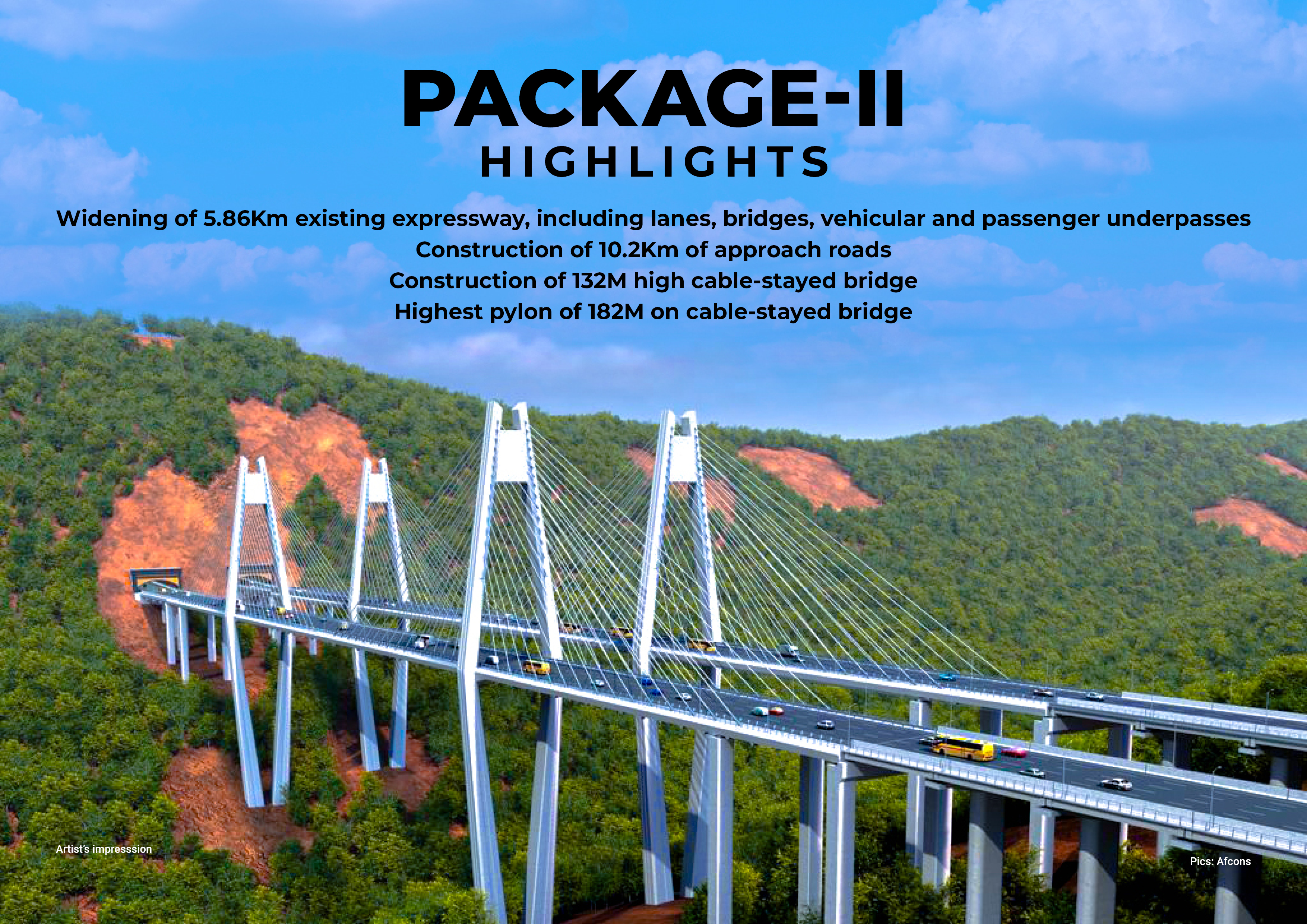
Maha to get India’s highest road cable-stayed bridge
The 132m-high bridge is being constructed in the Mumbai-Pune Expressway Missing Link project
India’s highest cable-stayed road bridge is being constructed in Maharashtra. This 132m-high bridge is being constructed by infrastructure major Afcons in the Mumbai-Pune Expressway Missing Link project. At present, the length of the existing Mumbai Pune Expressway from Khopoli exit to Sinhgad Institute is around 19 km. The Missing Link Project will bypass the Khandala Ghat section and will reduce the distance of the expressway by over six kilometres reducing travel time by more than 25 minutes. Moreover, the new link will help in reducing accidents besides improving fuel efficiency and reducing gas emissions.
Highest cable-stayed road bridge
The Mumbai-Pune Expressway Missing Link project has been divided into two packages. Afcons is executing Package-II which comprises widening of the existing expressway from six lanes to eight lanes, construction of two viaducts, including a cable-stayed bridge in one of the viaducts, approach roads, slip roads among various other features.
The foundation works for Viaduct-I which is about is 850m long has been completed and the launching of pre-tension girders and deck panels is in progress. Viaduct -II, where the cable-stayed bridge is being constructed, is about 650m long. The bridge will be at a height of 132m from ground level which will be the highest for any road project in the country.
“At present, the construction work of the foundation, piers and pylons is being undertaken in Viaduct-II. The highest pylon in this viaduct would be 182m from ground level, and this would also be the highest in any road project in India," said Afcons’ Project Manager Ranjit Jha.

Construction methodology
In Viaduct II, a self-climbing shuttering method, which is an automatic climbing formwork system, will be used to construct the pylon. “The system is designed specifically for each pylon shape. The pouring height is 4m. A ladder system is provided within the system to ensure safe vertical movement and access between the different platform levels,” said Jha.
For the construction of the deck, a Cantilever Form Traveller (CFT) will be used for casting of 9m-long segments. After casting of each segment, the formwork will be released with the help of hydraulic jacks, and the entire setup will be pushed forward for the casting of the next segment. The entire arrangement will have both vertical as well as horizontal access to specific locations with metal railing for safety reasons.
In viaduct I, slipform technique is being used for construction of piers. For the erection of I-girders, a launching gantry, which is designed in-house, is being used. The launching gantry is also being used for erecting precast deck slab panels for simultaneous completion of the deck slab.
Blasting work on expressway
The project faces various geological, transportation, and extreme engineering challenges. For the widening of the existing expressway from six lanes to eight lanes, blasting for hill cutting has to be carried out in allotted time slots. During blasting, not only traffic but also work near blasting locations are halted, and manpower and machinery are moved to a safe area far from the impact zone. Transportation of material and shifting of girders during heavy traffic on expressway are few other challenges that the team faces.
Package-II of the Mumbai-Pune Expressway Missing Link project will be completed in 2024.



